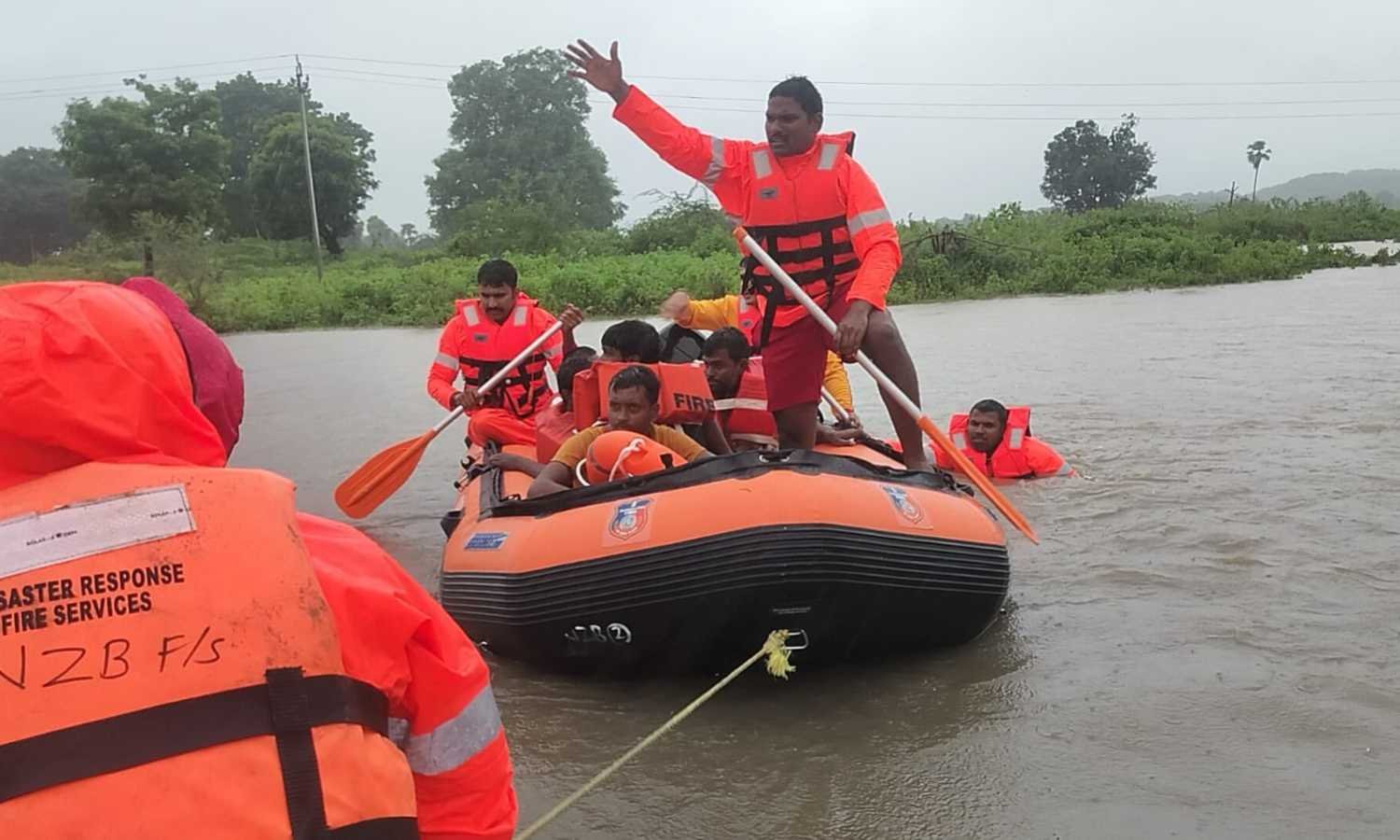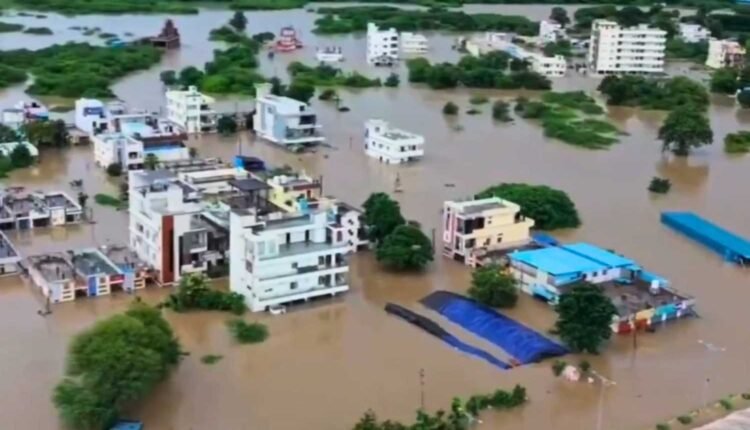Hyderabad: Two days of torrential rain have tested the infrastructure and disaster protocols of Kamareddy and Medak. Villages went under water. Tracks flooded and trains stopped. Officials moved fast, yet the event highlighted structural gaps that demand attention once the waters recede.
Kamareddy logged an average 49 cm. Nine mandals reported widespread damage. Inundation spread from low‑lying colonies to public buildings. The fatal wall collapse in Rajampet, which took the life of 28‑year‑old Dr. Vinay, underscored the hazard of sudden tank breaches. Devuni Cheruvu’s failure sent water rushing through lanes and into homes. The incident, while isolated, points to the need for regular tank health audits and emergency outflow mechanisms.
Yellareddy, Banswada, and Jukkal shifted to alert mode. Evacuations proceeded with boats and tractors. Control rooms coordinated supplies and rescue lists. Public announcements were frequent. The administrative muscle worked, but the spread of damage showed how quickly small streams can overwhelm settlement edges when drains clog and outfalls narrow.
In Medak, the pattern was near‑mirror. Streams over‑topped, roads vanished, and communications flickered. Shankarampet’s residential school became a focal point when floodwater entered dormitories. Rescuers evacuated nearly 350 students in phases. The operation succeeded, but it raised questions about siting of critical facilities, elevated plinth norms, and flood‑proofing for hostels.

Telangana floods spotlight systemic risks and recovery priorities
Papannapet’s inflows into the Manjeera submerged Ellapur bridge. Traffic stopped. The detour added hours to essential movement. Farmers lost paddy, maize, and cotton. Fodder stocks spoiled. These sectoral hits ripple into household incomes for months. Veterinary checks began as cattle stood in damp sheds.
On transport, the South Central Railway faced water on lines at Kamareddy, Bikanur, Akkannapet, and Medak. Cancellations included Kacheguda–Nizamabad, Kacheguda–Medak, Bodhan–Kacheguda, and Adilabad–Tirupati. Diversions kept some routes alive. Safety norms require ballast checks, drainage clearance, and consolidation before restart. The stoppage, while inconvenient, likely prevented larger mishaps.
Helpline numbers—Kacheguda 9063318082, Nizamabad 970329671, Kamareddy 9281035664, and Secunderabad 040‑27786170—helped passengers re‑plan travel. Crowd management at stations relied on RPF and announcements. This crisis illustrates the need for real‑time passenger information systems that push alerts to phones during weather events.
Public health measures moved in parallel. Dengue and malaria warnings went out. Health teams stocked ORS and IV fluids and ran visits to shelters. Sanitation squads sprayed larvicide and cleared garbage mounds.

